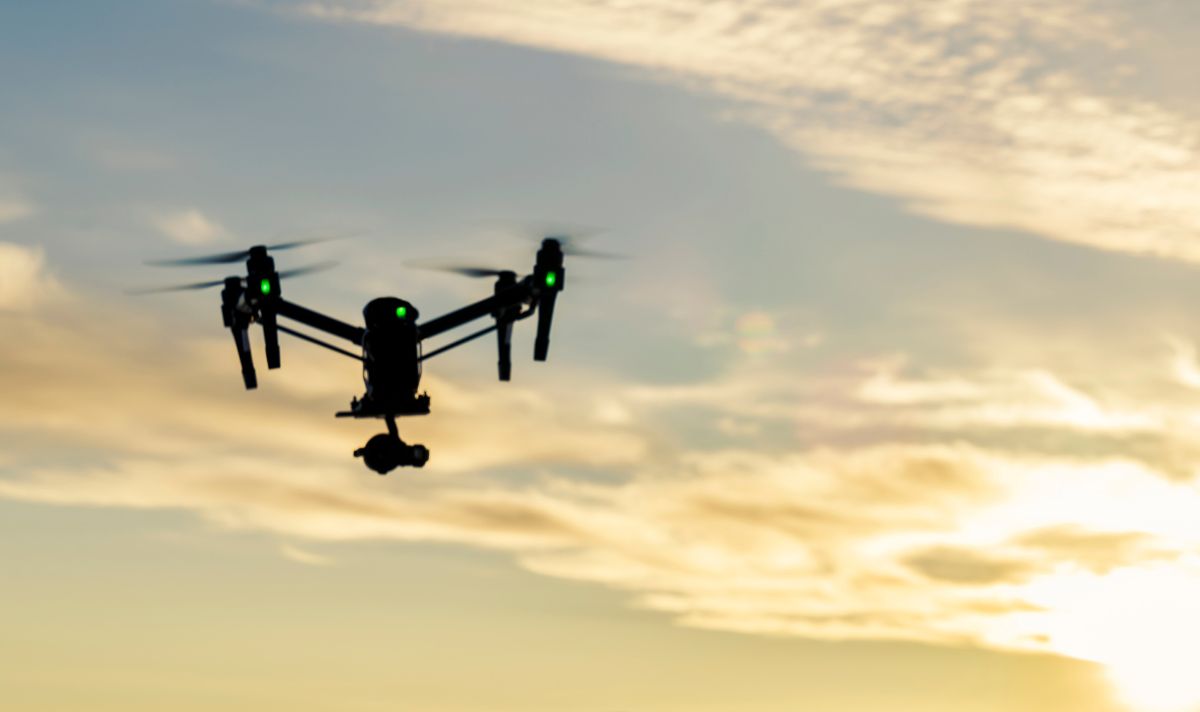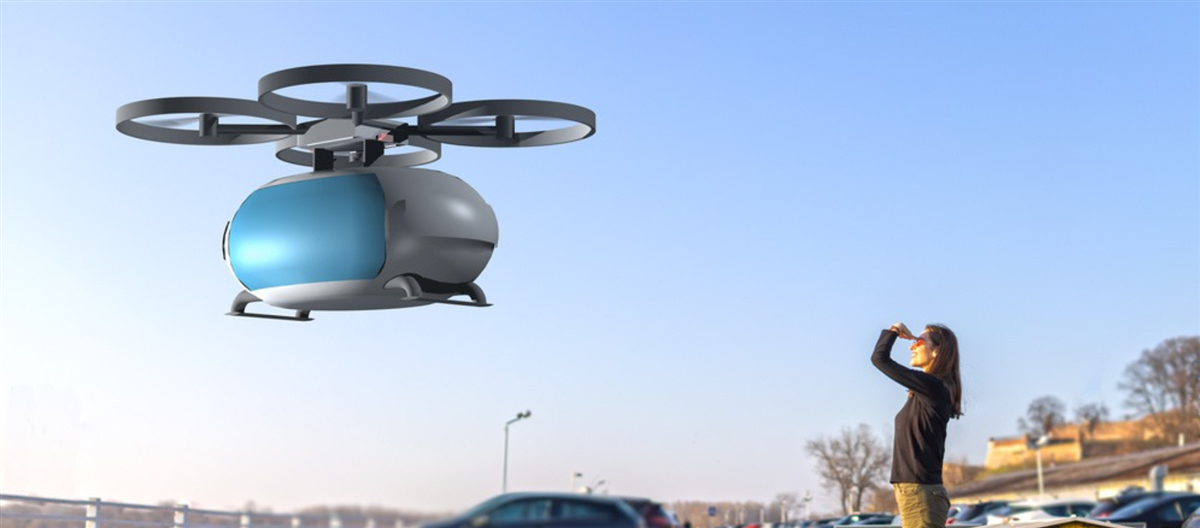Drone sightings around the world are on the rise, sparking concerns about security, privacy, and the future of airspace management. This surge in unmanned aerial vehicle (UAV) activity presents a complex issue, demanding a closer look at the diverse contexts and implications of these sightings. From recreational hobbyists to sophisticated military operations, the reasons behind drone flights are as varied as the drones themselves.
Drone sightings are on the rise globally, sparking concerns about privacy and security. To understand the technology behind many of these drones, it’s helpful to look at major manufacturers like dji canada , a key player in the industry. Their advancements influence the capabilities of drones worldwide, impacting the nature and frequency of those increasingly common sightings.
We’ll explore the global distribution of these sightings, the types of drones involved, and the responses from governments and organizations worldwide.
This exploration will cover the geographic distribution of drone sightings, analyzing regional variations and the factors driving them. We’ll delve into the different types of drones involved, their capabilities, and potential uses, comparing their operational characteristics. We’ll also examine the purposes behind drone sightings, including recreational, commercial, and potentially malicious activities, assessing their implications for security and privacy. Finally, we’ll discuss how authorities respond to drone sightings, the evolution of public perception, and predictions for the future of this rapidly evolving technology.
Geographic Distribution of Drone Sightings

Drone sightings are a global phenomenon, with varying frequencies across different regions. Several factors influence this distribution, including regulatory frameworks, technological accessibility, and societal acceptance of drone technology. A comprehensive analysis requires considering both the number of reported sightings and the underlying reasons for these variations.
World Map of Drone Sightings
A world map illustrating drone sighting frequency would show a higher concentration in developed nations with robust drone industries and populations with higher purchasing power for recreational and commercial use. North America, Western Europe, and parts of East Asia would likely show darker shades indicating higher sighting frequency, while less developed regions might appear lighter. Color coding could range from light green (few sightings) to dark red (very frequent sightings), reflecting the density of reported incidents.
Top Five Countries with Highest Drone Sightings
The top five countries with the most reported drone sightings would likely include the United States, China, Germany, the United Kingdom, and Japan. This is due to a combination of factors, including large populations, extensive drone usage in various sectors, and robust reporting mechanisms. The types of drones sighted would vary depending on the country’s specific drone ecosystem.
| Country | Number of Sightings (Example) | Drone Types | Context of Sightings |
|---|---|---|---|
| United States | 10,000 | Consumer drones, commercial drones, military drones | Recreational, commercial, law enforcement, military operations |
| China | 8,000 | Consumer drones, agricultural drones, surveillance drones | Commercial, agricultural, surveillance, security |
| Germany | 5,000 | Consumer drones, commercial drones, delivery drones | Recreational, commercial, package delivery, infrastructure inspection |
| United Kingdom | 4,000 | Consumer drones, commercial drones, mapping drones | Recreational, commercial, surveying, aerial photography |
| Japan | 3,000 | Consumer drones, agricultural drones, inspection drones | Recreational, agricultural, infrastructure inspection, disaster relief |
Factors Contributing to Regional Variations
Several factors contribute to the uneven distribution of drone sightings globally. Stringent drone regulations in some countries might suppress reported sightings, while lax regulations or lack of enforcement in others could lead to higher numbers. Technological advancements, particularly in drone capabilities and affordability, also play a significant role. Societal acceptance, or the lack thereof, significantly impacts both the use and reporting of drone sightings.
Types of Drones Involved in Sightings

A wide variety of drones are involved in reported sightings, ranging from small consumer models to large, sophisticated commercial and military systems. Understanding the characteristics of each type is crucial for effective detection, identification, and response.
With drone sightings increasing globally, from bustling cityscapes to remote wilderness areas, it’s clear these devices are everywhere. If you’re thinking about getting your own, checking out resources like this guide to the best buy drone can help you choose wisely. Understanding drone regulations becomes even more important as we see more of these devices in our skies.
Categorization of Drones by Type, Drone sightings around the world
Drones can be categorized based on size, capabilities, and intended use. This includes consumer drones (small, lightweight, primarily for recreational use), commercial drones (larger, more capable, used for various professional applications), and military drones (highly advanced, often armed, used for surveillance and combat operations).
- Consumer Drones: Typically small and lightweight, with limited flight range and payload capacity. Features often include built-in cameras and GPS. Examples include DJI Mavic and Parrot Anafi.
- Commercial Drones: Larger and more robust than consumer drones, with increased flight range, payload capacity, and advanced features like thermal imaging or LiDAR. Used for tasks like surveying, inspection, and delivery. Examples include DJI Matrice and Autel Evo.
- Military Drones: Highly advanced and often armed, capable of long-range flights and carrying significant payloads. Used for surveillance, reconnaissance, and combat operations. Examples include MQ-9 Reaper and General Atomics Avenger.
Technological Features Relevant to Detection and Identification
Technological features influence detection and identification. Factors like size, shape, flight characteristics (speed, altitude, maneuverability), and unique radio frequency signatures all contribute to a drone’s detectability. Advanced drones might employ anti-detection technologies, making identification more challenging.
Comparison of Operational Capabilities

Different drone types have varying operational capabilities. Consumer drones typically have shorter flight times and limited ranges, while commercial and military drones can operate for longer durations and cover greater distances. Payload capacity also differs significantly, influencing the types of tasks each drone can perform.
Context and Purpose of Drone Sightings
Drone sightings can be categorized based on their apparent purpose, each category presenting different implications for security and privacy. Understanding the context of a sighting is crucial for effective response and mitigation of potential risks.
Categorization by Apparent Purpose
Drone sightings can be broadly classified into recreational, commercial, military, surveillance, and unauthorized categories. Each category has its own set of implications and requires a tailored response.
- Recreational: Used for hobbies like photography or videography. Generally pose minimal security risk, but can infringe on privacy if not used responsibly.
- Commercial: Used for professional applications such as infrastructure inspection, agriculture, or delivery. Usually authorized and regulated, but can still pose risks if not operated safely.
- Military: Used for surveillance, reconnaissance, or combat operations. Pose significant security implications, particularly if used in unauthorized areas or for illicit activities.
- Surveillance: Used for unauthorized monitoring of individuals or locations. Raises serious privacy concerns and potential legal issues.
- Unauthorized: Any drone operation conducted without proper authorization or in violation of regulations. This category encompasses a broad range of activities, all potentially posing security or safety risks.
Implications for National Security, Public Safety, and Privacy
Unauthorized drone flights near critical infrastructure (airports, power plants, etc.) pose significant national security risks. Drones can be used to deliver explosives, conduct surveillance, or disrupt operations. Public safety is also at risk, as drones can cause accidents if flown recklessly or malfunction. Privacy concerns arise from the potential for unauthorized surveillance and data collection.
Examples of Concerning Drone Sightings
Numerous incidents illustrate the potential for misuse. For instance, drone sightings near airports have caused flight disruptions, while drones used for smuggling contraband highlight the security challenges. Reports of drones equipped with cameras capturing private footage have raised serious privacy concerns.
Responses to Drone Sightings

Various methods and strategies are employed to detect, track, and respond to drone sightings. Effective responses require coordinated efforts from multiple agencies and a clear understanding of the relevant regulations and protocols.
Methods for Detecting and Tracking Drones
Drone detection utilizes various technologies, including radar systems, radio frequency (RF) detectors, optical sensors, and acoustic sensors. These systems work individually or in combination to detect and track drones, providing information on their location, altitude, and trajectory. Advanced systems can even identify the specific type of drone.
Standard Operating Procedures for Unauthorized Drone Sightings
A flowchart for responding to unauthorized drone sightings would typically begin with detection and identification. This is followed by assessment of the threat level, which dictates the appropriate response. Options range from observation and warning to interception and disabling of the drone. Law enforcement would be involved in cases of potential criminal activity.
Strategies for Regulating Drone Usage
Countries employ diverse strategies for regulating drone usage. These include licensing requirements, registration databases, designated flight zones, and technological countermeasures. Some countries prioritize education and public awareness campaigns to promote responsible drone operation. Enforcement mechanisms vary significantly across jurisdictions.
Public Perception and Media Coverage
Media plays a crucial role in shaping public perception of drones. News reports, documentaries, and social media discussions influence public understanding of the technology’s benefits and risks.
Analysis of Media Reports
Media reports on drone sightings often focus on security concerns, privacy violations, and potential misuse. Recurring themes include near-misses at airports, unauthorized drone flights over sensitive areas, and the use of drones in criminal activities. The narrative frequently emphasizes the need for stricter regulations and improved detection technologies.
Timeline of Public Perception
Public perception of drones has evolved significantly. Initially viewed with excitement and curiosity, the increasing number of unauthorized sightings and misuse cases has shifted public opinion towards greater concern. Key events, such as major drone-related incidents or regulatory changes, have influenced this shift. A timeline would visually represent this evolution, highlighting major milestones and shifts in public perception.
Drone sightings are becoming increasingly common globally, raising concerns about security and privacy. To understand the complexities involved, it’s helpful to look at specific examples, like the regulations and use cases surrounding drones in major cities. Check out this resource on drone in Paris for a good starting point. This helps illustrate the broader issues we face with managing drone use worldwide, as similar challenges appear in different contexts.
Role of Media in Shaping Public Opinion
Media coverage significantly influences public perception. Sensationalized reporting of drone incidents can fuel public anxiety and distrust, while balanced and informative reporting can promote a more nuanced understanding of the technology and its implications. Social media further amplifies these narratives, impacting public discourse and policy debates.
Future Trends and Predictions: Drone Sightings Around The World
The future of drone technology will likely involve advancements in autonomy, intelligence, and capabilities, impacting the frequency and nature of drone sightings. This necessitates proactive measures to manage the associated risks.
Future Trends in Drone Technology
Future trends include increased autonomy, enabling drones to perform complex tasks without human intervention. Advancements in artificial intelligence will enhance drone navigation, obstacle avoidance, and decision-making. Miniaturization and improved battery technology will extend flight times and ranges. The proliferation of drone swarms presents both opportunities and challenges.
Advancements in Drone Detection and Counter-Drone Technologies
Advancements in drone detection will include more sophisticated sensor technologies, improved algorithms for identifying and tracking drones, and the development of counter-drone systems capable of neutralizing or disabling unauthorized drones. AI-powered systems will enhance the speed and accuracy of detection and response.
Scenario Outlining Challenges and Opportunities
A future scenario might involve a significant increase in drone usage across various sectors, leading to a rise in drone sightings. This will necessitate robust regulatory frameworks, advanced detection technologies, and effective countermeasures to address potential security and safety risks. However, it also presents opportunities for economic growth, innovation, and improved efficiency across various industries.
Final Review
The increasing prevalence of drone sightings worldwide highlights the need for robust regulations, advanced detection technologies, and a clear understanding of the diverse purposes behind drone usage. As drone technology continues to evolve, so too must our strategies for managing their integration into our airspace and addressing the associated security and privacy concerns. The future of drone technology will depend on effective international collaboration, responsible innovation, and proactive measures to mitigate potential risks.
This ongoing dialogue is crucial to ensuring the safe and beneficial integration of drones into our daily lives.
Frequently Asked Questions
What are the most common types of drones sighted?
Common types include small consumer drones for photography and videography, larger commercial drones used for delivery or inspection, and military-grade drones with advanced surveillance capabilities.
How are drone sightings reported?
Reporting methods vary by location but often involve contacting local law enforcement, aviation authorities, or submitting reports through dedicated online platforms.
What are the penalties for unauthorized drone operation?
Penalties vary widely by jurisdiction and can range from fines to imprisonment, depending on the severity of the violation and any harm caused.
How can I protect myself from drone surveillance?
While complete protection is difficult, being aware of your surroundings, using encryption for sensitive communications, and understanding drone detection technologies can help mitigate risks.
